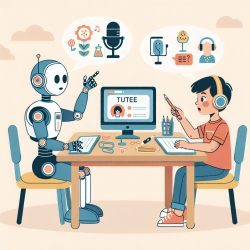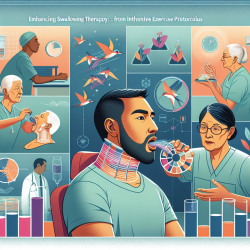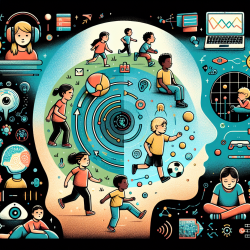In the evolving landscape of educational technology, the integration of social robots into learning environments has garnered significant attention. A recent study titled "Comparing a Robot Tutee to a Human Tutee in a Learning-By-Teaching Scenario with Children" provides valuable insights into how these robots can be used effectively in educational settings. This blog aims to help practitioners enhance their skills by implementing the outcomes of this research or encouraging further exploration in this domain.
Key Findings from the Research
The study involved sixth-grade students tutoring both a robot tutee and a human tutee in a collaborative mathematics game. Here are some of the key findings:
- Enjoyment and Willingness to Interact: Students reported high levels of enjoyment in both scenarios, indicating that children are open to interacting with robot tutees.
- Communication and Collaboration: Communication and collaboration were found to be easier with human tutees. Students felt they needed more teacher support when tutoring the robot.
- Perceived Learning Gains: Students believed that both the robot and the human tutee learned mathematics, but they felt their own learning was minimal.
- Task Clarity: The task was perceived as slightly clearer and more straightforward when interacting with a human tutee.
Practical Implications for Practitioners
Based on these findings, here are some practical recommendations for practitioners looking to integrate robot tutees into their educational programs:
- Teacher Support: Ensure that teachers or adult supervisors are present to assist students when they are tutoring robot tutees. This support is crucial for facilitating smoother interactions and enhancing the learning experience.
- Communication Training: Invest in improving the interactive capabilities of robots. Enhanced speech recognition and response systems can make communication more intuitive and effective.
- Task Design: Design tasks that are clearly defined and straightforward to minimize confusion and enhance the learning experience for both the tutor and the tutee.
- Engagement Strategies: Develop strategies to keep students engaged and motivated, as high enjoyment levels indicate a willingness to participate in learning activities involving robot tutees.
Encouraging Further Research
While the study provides valuable insights, it also highlights the need for further research in several areas:
- Long-term Effects: Investigate the long-term effects of using robot tutees on student learning and engagement.
- Autonomy and Independence: Explore ways to enhance the autonomy of robot tutees, reducing the need for constant teacher intervention.
- Ethical Considerations: Address ethical concerns related to child-robot interactions, ensuring the emotional and physical safety of students.
In conclusion, while robot tutees show promise in educational settings, their current limitations necessitate careful implementation and further research. Practitioners should leverage these findings to create supportive, engaging, and effective learning environments.
To read the original research paper, please follow this link: Comparing a Robot Tutee to a Human Tutee in a Learning-By-Teaching Scenario with Children.










